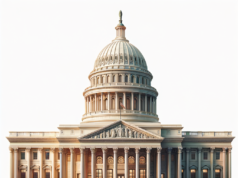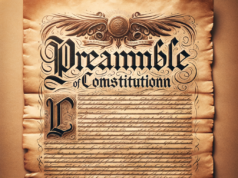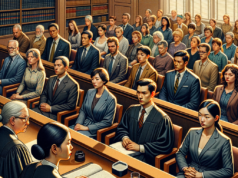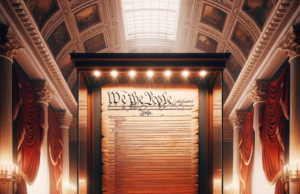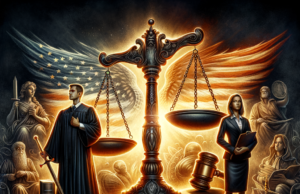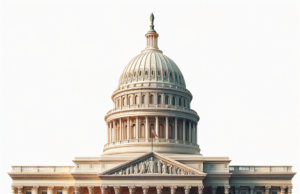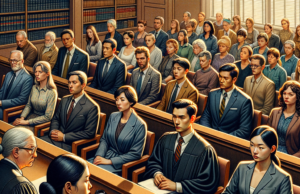Contents
- 1 Understanding the Historical Context of Gun Ownership Laws in the United States
- 2 The Current Landscape: A Comprehensive Overview of Gun Ownership Regulations
- 3 Analyzing the Impact of Gun Ownership Laws on Crime Rates and Public Safety
- 4 The Role of Advocacy Groups in Shaping Gun Ownership Legislation
- 5 Debunking Common Myths Surrounding Gun Ownership and Regulation
- 6 Future Directions: Potential Reforms and Their Implications for Gun Ownership Laws
Gun ownership laws in the United States have long been a contentious issue, sparking debates that touch on constitutional rights, public safety, and societal values. As mass shootings and gun-related violence continue to dominate headlines, understanding the complexities of gun ownership laws becomes increasingly vital. This article aims to unveil the truth behind these regulations, examining their historical context, current landscape, impact on crime rates, the role of advocacy groups, common misconceptions, and potential future reforms.
Understanding the Historical Context of Gun Ownership Laws in the United States
The roots of gun ownership laws in the United States can be traced back to the Second Amendment of the Constitution, ratified in 1791, which states, “the right of the people to keep and bear Arms, shall not be infringed.” This amendment was influenced by the early American experience with British rule, where the disarmament of colonial militias was seen as a threat to liberty. Over the centuries, the interpretation of the Second Amendment has evolved, leading to landmark Supreme Court cases such as District of Columbia v. Heller (2008), which affirmed an individual’s right to possess firearms unconnected with service in a militia. As societal attitudes towards guns have shifted, so too have the laws governing their ownership, reflecting a complex interplay between individual rights and collective safety.
The Current Landscape: A Comprehensive Overview of Gun Ownership Regulations
Today, gun ownership laws in the United States vary significantly from state to state, creating a patchwork of regulations that can be confusing for both gun owners and law enforcement. Federal laws set certain baseline requirements, such as background checks for purchases from licensed dealers, but many states have enacted additional measures, including waiting periods, mandatory training, and restrictions on specific types of firearms. Some states have adopted “stand your ground” laws that allow individuals to use deadly force in self-defense without the duty to retreat, while others have implemented stricter gun control measures in response to rising gun violence. This divergence in regulations raises questions about the effectiveness of existing laws and their ability to address the ongoing gun violence crisis.
Analyzing the Impact of Gun Ownership Laws on Crime Rates and Public Safety
The relationship between gun ownership laws and crime rates is a subject of extensive research and debate. Proponents of stricter gun control argue that more rigorous regulations lead to lower rates of gun violence, citing studies that show correlations between states with stringent laws and decreased firearm-related deaths. Conversely, advocates for gun rights contend that responsible gun ownership deters crime and that law-abiding citizens should not be penalized for the actions of criminals. The complexity of this issue is further compounded by factors such as socioeconomic conditions, cultural attitudes towards guns, and the availability of mental health resources, making it challenging to draw definitive conclusions about the impact of gun ownership laws on public safety.
The Role of Advocacy Groups in Shaping Gun Ownership Legislation
Advocacy groups play a crucial role in shaping the discourse surrounding gun ownership laws in the United States. Organizations such as the National Rifle Association (NRA) and Everytown for Gun Safety mobilize supporters, lobby lawmakers, and influence public opinion on gun-related issues. The NRA has historically championed the rights of gun owners, opposing many forms of regulation and promoting the idea that gun ownership is a fundamental American right. In contrast, groups like Everytown advocate for comprehensive gun control measures, emphasizing the need for policies that prioritize public safety. The ongoing battle between these opposing forces reflects broader societal divisions on the issue of gun ownership, complicating efforts to reach a consensus on effective legislation.
Debunking Common Myths Surrounding Gun Ownership and Regulation
Numerous myths surround gun ownership and regulation, often clouding public understanding of the issue. One prevalent myth is that more guns lead to more crime; however, research indicates that states with higher rates of gun ownership do not necessarily experience higher crime rates. Another misconception is that gun control measures infringe upon Second Amendment rights; in reality, many legal scholars argue that reasonable regulations can coexist with the right to bear arms. Additionally, the belief that “good guys with guns” are the solution to preventing mass shootings is challenged by studies showing that armed civilians are rarely able to stop such incidents effectively. By debunking these myths, a clearer picture of the realities of gun ownership and regulation can emerge, fostering more informed discussions.
Future Directions: Potential Reforms and Their Implications for Gun Ownership Laws
As the debate over gun ownership laws continues, potential reforms are being proposed that could reshape the landscape of gun regulation in the United States. These include universal background checks, red flag laws that allow for the temporary removal of firearms from individuals deemed a risk to themselves or others, and measures to regulate the sale of high-capacity magazines and assault weapons. Advocates for reform argue that such measures could significantly reduce gun violence and enhance public safety. However, opponents warn that these regulations could infringe upon individual rights and fail to address the root causes of violence. The path forward will require careful consideration of both public safety concerns and the rights of gun owners, as lawmakers seek to balance these often conflicting interests.
The issue of gun ownership laws in the United States is multifaceted, steeped in history, and influenced by a myriad of factors. As society grapples with the realities of gun violence and the rights of individuals, understanding the complexities of these laws is essential for informed discourse and effective policymaking. By examining the historical context, current regulations, impacts on crime rates, the role of advocacy groups, common myths, and potential reforms, we can begin to navigate the challenging terrain of gun ownership laws and work towards solutions that prioritize both safety and rights.





